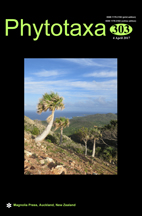Abstract
In the living Allium collection of the South Siberian Botanical Garden of the Altai State University, Barnaul (Russia), among the species Allium tulipifolium and A. robustum (A. subg. Melanocrommyum sect. Decipientia), several morphologically intermediate plants grown from seeds were found. We assumed they could result from spontaneous hybridization. To confirm our assumption we studied the hybrids and their alleged parents cytologically (chromosome and genome size) and compared the sequences of the nuclear DNA (ITS) and three plastid DNA fragments (trnL-trnF and rpl32-trnL spacers and rps16 intron). Our data confirmed the hybrid nature of these plants and also showed that the hybridization between the two species (A. tulipifolium and A. robustum) is possible in both directions. This opens up opportunities for targeted hybridization and breeding of new ornamental varieties.

